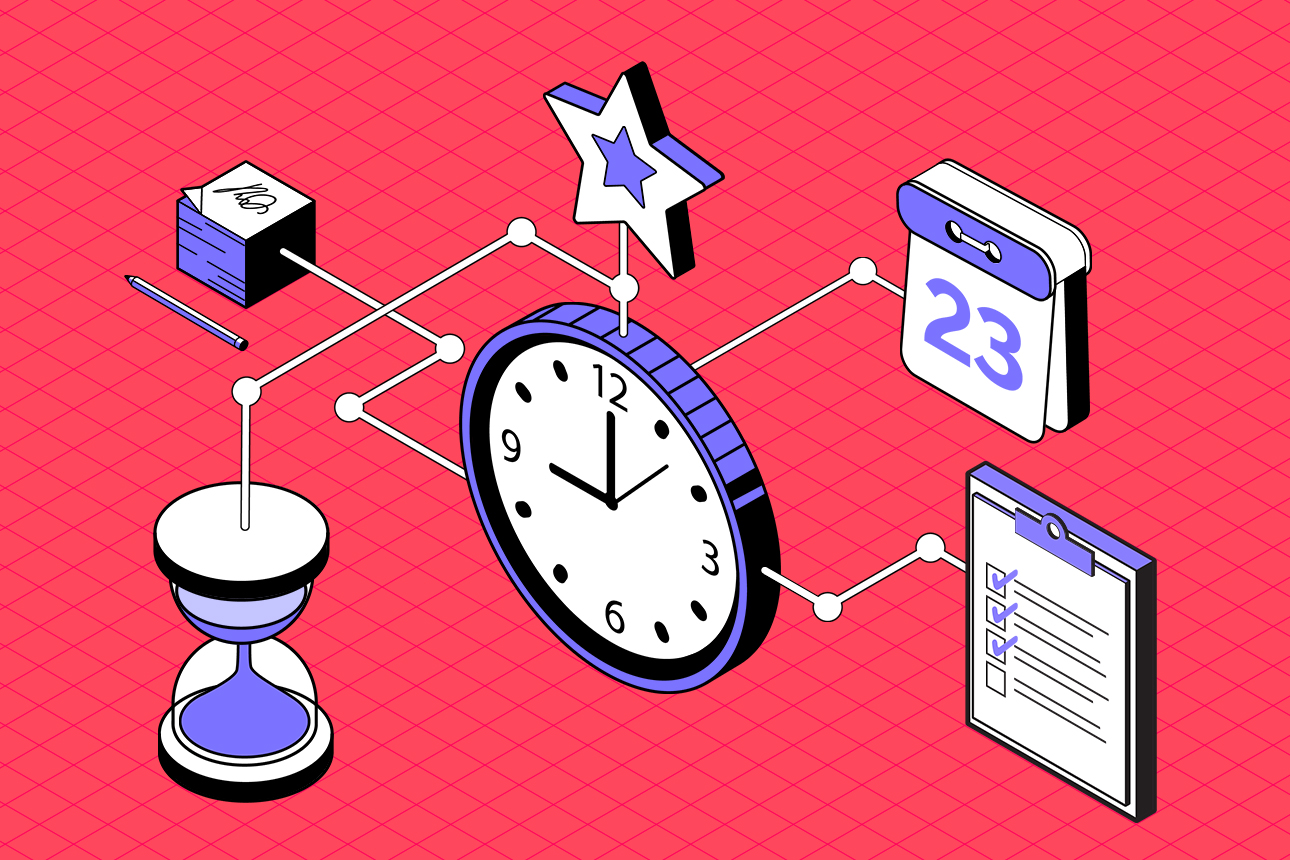How to Help Employees With ADHD Address the Challenges of Remote Work
Leaders can use these strategies to help workers stay focused and productive in virtual work settings, whether they’ve been diagnosed with ADHD or not.

Carolyn Geason-Beissel/MIT SMR | Getty Images
Editor’s note: In consultation with the authors, this article was updated June 26, 2023, to better reflect the views of the neurodiversity movement.
Flexible work arrangements, such as hybrid and remote models, have become important for talent acquisition and retention in the post-pandemic world. As organizations refine their virtual work practices, it is important to ensure that they are inclusive of neurodivergent employees. Attention-deficit/hyperactivity disorder (ADHD) is among the most prevalent neurodivergent conditions. While some individuals with ADHD may find that remote work is well suited to their needs and gives them a greater degree of control over their work environment, others may find that remote work presents unique challenges. Remote work often lacks concrete time cues and can introduce different kinds of distractions and methods for sharing information than an in-person office setting, which can be challenging for some people with ADHD. If these challenges are not managed effectively, they can lead to a host of issues, such as burnout, anxiety, productivity loss, demotivation, and, ultimately, quitting.1
Managers can work with employees with ADHD to implement simple strategies to better tailor remote work to their needs. Because employees may be undiagnosed or choose not to disclose their neurodivergent conditions, the five evidence-based interventions we suggest below can help foster better remote work practices to the benefit of all employees.2 But before we go into more detail about those, let’s briefly discuss ADHD.
Email Updates on the Future of Work
Monthly research-based updates on what the future of work means for your workplace, teams, and culture.
Please enter a valid email address
Thank you for signing up
Understanding ADHD
ADHD stems from structural differences in brain regions and variations in cellular and neural mechanisms that pose challenges to the daily self-regulation of goal-directed behaviors.3 Consequently, executive functions such as attention, time management, working memory, response inhibition, and mental processing of rewards operate differently to varying degrees in people with ADHD.4 These executive processes work together to help translate our bigger goals, visions, knowledge, and skills into daily goal-directed actions across all aspects of our lives, including work. Some individuals with ADHD may find that their differences disrupt these goal-oriented actions, even when they possess a clear vision, knowledge, skills, and motivation.5 Though medication can help regulate concentration, inhibition, and working memory, inclusive work practices and accommodations across five daily behavior dimensions can help to unlock potential and create the conditions for success.
References
1. J.M. Szulc, F.-L. McGregor, and E. Cakir, “Neurodiversity and Remote Work in Times of Crisis: Lessons for HR,” Personnel Review (preprint, December 2021).
2. E.R. Russo, D.L. Ott, and M. Moeller, “Helping Neurodivergent Employees Succeed,” MIT Sloan Management Review, May 3, 2023, https://sloanreview.mit.edu; and R.A. Barkley and M.J. Poillion, “Attention-Deficit Hyperactivity Disorder: A Handbook for Diagnosis and Treatment,” Behavioral Disorders 19, no. 2 (February 1994): 150-152.
3. Barkley and Poillion, “Attention-Deficit Hyperactivity Disorder,” 150-152.
4. R.A. Barkley, K.R. Murphy, and M. Fischer, “ADHD in Adults: What the Science Says” (New York: Guilford Press, 2010).
5. R.A. Barkley and C.M. Benton, “Taking Charge of Adult ADHD: Proven Strategies to Succeed at Work, at Home, and in Relationships,” 2nd ed. (New York: Guilford Press, 2021).
6. Ibid.
7. Y. Ginsberg, J. Quintero, E. Anand, et al., “Underdiagnosis of Attention-Deficit/Hyperactivity Disorder in Adult Patients: A Review of the Literature,” The Primary Care Companion for CNS Disorders 16, no. 3 (2014): 1-17.
8. T.R. Coker, M.N. Elliott, S.L. Toomey, et al., “Racial and Ethnic Disparities in ADHD Diagnosis and Treatment,” Pediatrics 138, no. 3 (September 2016).
9. J.A. Doshi, P. Hodgkins, J. Kahle, et al., “Economic Impact of Childhood and Adult Attention-Deficit/Hyperactivity Disorder in the United States,” Journal of the American Academy of Child and Adolescent Psychiatry 51, no. 10 (October 2012): 990-1002.
10. E.W. Skogli, M.H. Teicher, P.N. Andersen, et al., “ADHD in Girls and Boys — Gender Differences in Co-Existing Symptoms and Executive Function Measures,” BMC Psychiatry 13 (2013): 1-12.
11. Barkley and Poillion, “Attention-Deficit Hyperactivity Disorder,” 150-152.
12. R. Ptacek, S. Weissenberger, E. Braaten, et al., “Clinical Implications of the Perception of Time in Attention-Deficit Hyperactivity Disorder (ADHD): A Review,” Medical Science Monitor 25 (2019): 3918-3924.
13. M. Das, J. Tang, K.E. Ringland, et al., “Towards Accessible Remote Work: Understanding Work-From-Home Practices of Neurodivergent Professionals,” Proceedings of the ACM on Human-Computer Interaction 5, no. CSCW1 (April 2021): 1-30.
14. M. Hamdani and S. Biagi, “Providing Performance Feedback to Support Neurodiverse Employees,” MIT Sloan Management Review, Feb. 1, 2022, https://sloanreview.mit.edu.
15. Ibid.
16. O. Jackson, “Ascending Diverse Learners” (poster presented at the NEIU Student Research and Creative Activities Symposium, online, April 22, 2021).
17. Das et al., “Towards Accessible Remote Work,” 1-30.
